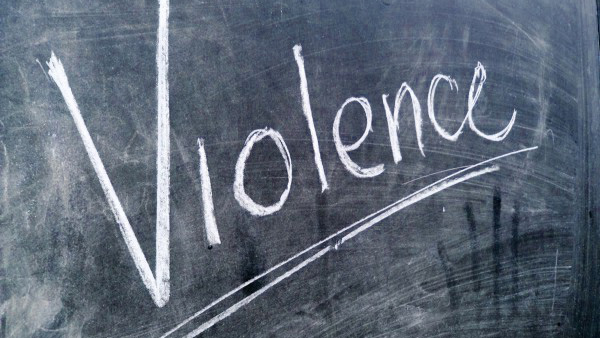by Susan Abram
The patient visiting Dr. Elizabeth Tung’s clinical office had stopped taking her medications. She struggled with eating enough food but didn’t want to go to the market anymore. She rarely left her home.
“She was afraid to get out of the house, out into her neighborhood and out of her block,” said Tung, who specializes in internal medicine at the University of Chicago Medical Center. The woman was also afraid to ask her son to return home to help her, Tung added.
“She was terrified that a bright young black man such as her son, who was able to get out of the neighborhood, would be recognized and shot by a gang member,” Tung said. “It was out of a sense of her protecting him from her own neighborhood. She was isolating herself to protect her son, allowing her own health to take a hit.”
Such stories of isolation and loneliness have become more common in Tung’s practice, especially among older adults who live in Chicago’s most violent neighborhoods. She and her colleagues started researching the trend in 2018. They found that among the 500 adults they surveyed, exposure to community violence was associated with less frequent social interaction, and a lower perception of social support from friends. In addition, 65% of those surveyed said they felt lonely at least some of the time.
Millions of dollars are spent on law enforcement to solve crimes. But more often than not, there is scant funding for violence prevention.
“At a time when public health and policy leaders are calling for solutions to the ‘epidemic of loneliness,’ identifying populations at higher risk because of violence could help target interventions and ensure equitable access to social and medical support,” Tung and her colleagues wrote in a recent study.
Their study was among several compiled in a special edition of Health Affairs that looks at the health effects of violence and how public policy might respond. The broad goal was to understand how homicides, police brutality and domestic violence, for example, continue to cause harm long after arrests are made.
One study found that in a survey of 39 young African American youths living in Kansas City, Missouri, there was a strong desire for a community discussion about violence. Another study examined whether alcohol-related problems, such as convictions for driving under the influence (DUI), were associated with a higher risk for future domestic violence incidents among those allowed to purchase handguns in California. Researchers found that purchasers with prior DUIs had close to three times the risk of subsequent arrest for intimate partner violence compared to those with no criminal history.
A general theme emerges in the studies published by the journal: Violence, whether experienced directly or indirectly, has ripple effects that profoundly shape public health. Blood pressure rises. Stress levels increase. Seniors stay inside their homes and become isolated. Teens become anxious and hypervigilant as police continue to parole the area. Millions of dollars are spent on law enforcement to solve crimes. But more often than not, there is scant funding for violence prevention or to help people recover from the physical and mental trauma of such events.
More can be done among health care leaders to prevent it from happening, just as they would illnesses
“Violence is indeed a public health issue,” said Judy Belk, president and CEO of The California Wellness Foundation, which supported the work on violence for Health Affairs along with the Blue Shield of California Foundation. “As someone who has experienced violence through the loss of a sister to gun violence, a loss of a cousin to gun violence, and have seen how that impacted the community I grew up in, in Alexandria, Virginia and how it impacted my family and how it continued to impact me, (the research) is a reminder that the long term effects of violence are with us.”
While the increased awareness of the long shadow of violence is a good start, more can be done among health care leaders to prevent it from happening, just as they would illnesses, said Dr. Robert Riewerts, chief of pediatrics for Southern California Permanente Medical Group. Doctors screen for all kinds of diseases, but others tend to fall by the wayside, he added.
He said pediatricians should not only ask parents if there is a firearm in the home, but also talk to them about gun safety in the same way a doctor would discuss pool safety.
Domestic violence cost the state $9 billion a year in providing care to those who suffered mental and physical harm.
“I think pediatricians have been bashful about it,” he said. “I think parents want to be asked questions like that because they want to know we’re concerned with the safety of their children.”
And more funding is needed for programs that promote prevention, said Sandra Henriquez, CEO of CalCASA or the California Coalition Against Sexual Assault. In 2012, her organization commissioned a study that found that domestic violence cost the state $9 billion a year in providing care to those who suffered mental and physical harm.
The group asked California lawmakers for $50 million in 2018 to fund programs that aim to prevent sexual and domestic violence. In the past, most of the money would go toward shelters. Her group received $5 million for prevention efforts and $5 million toward shelters last year. This year, they received $5 million for both.
“We really believe criminalization is not going to end sexual violence,” Henriquez said. “We have to prevent it. We have to treat it, to work on it. Not talking about it increases the risk of it happening again.”
Susan Abram is a freelance journalist who previously covered health and county government for the Los Angeles Daily News, and is a USC Annenberg Health Journalism fellow. Her story first appeared in the Center for Health Journalism’s Fellowship Showcase.



Violence is bad, mmmkay, now give us your guns.(for the children of course). Btw what’s up with this Belk woman who claims to have lost half of her family to “gun violence” ? What’s the story behind that? Guessing she’s either full of crap, or the product of a family of criminals and nut jobs. Stupid lazy article
Sugar Loaf Hill.
You’ve never heard of it.
Saw a documentary on it last night.
It was a fortified hill on the Shuri Line in Okinawa in WWII.
When the 29th Marines finally took it less than 50% of the assault force was left standing; everybody else had either been killed or horribly wounded.
Seventy-four years later those that survived that assault wake up screaming in the middle of the night, and think about it every day.
In their old age.
Seventy-four years later.
My grandparents also recounted stories of their ancestors being rounded up like cattle, bearded into holding cells, chained and shackled, put on board ships, seeing their fellow “passengers if you will” get sick and die and finally arrive in a new foreign land. The tragedy, violence they experienced had only just begun. My family is Black of African origin.
Really, what’s the point of this article. My culture and many others have a beginning, middle and end plagued by tragic events. If my family had not been strong, endeavored to persevere through hundreds of years of persecution and instilled in me a since of pride, respect and self determination I would not be the person I am today.
Is this article about blaming, making excuses or a For Your Information piece? Enough already.
Damn, Madame Kong. Harsh words. Stupid and lazy? Coming from a cop? What is the saying about the pot calling the kettle black. Or, I guess you would probably call the kettle the N-word.
Cf, only one throwing around the n-word around here is you, what is your problem with black people anyways? Last thing I remember you writing about was attacking an accomplished woman of color, I can’t believe they taught you that stuff in your pan African gender studies. Or are you representing a new radical branch of Chicano studies we haven’t heard of yet?